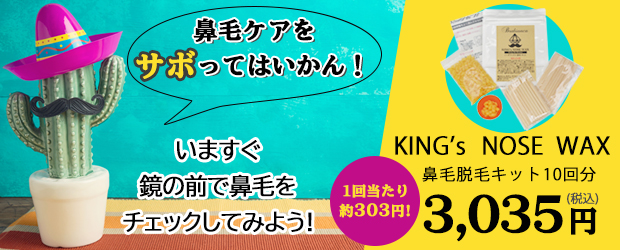The civilization of ancient Egypt is renowned for its remarkable innovations in art, science, and spirituality. Among their most enduring contributions are the development of sophisticated writing systems, the creation of durable inks, and symbols imbued with layered religious and cultural meanings. Exploring these elements reveals how Egyptians intertwined knowledge and belief, producing symbols like the Eye of Horus that continue to captivate us today.
もくじ
- 1 Table of Contents
- 2 The Origins of Egyptian Writing and Symbolic Communication
- 3 The Art and Science of Ancient Egyptian Ink Production
- 4 The Significance of Symbols in Egyptian Religion and Society
- 5 Deep Dive: The Eye of Horus as a Symbol of Protection and Healing
- 6 Architectural Alignments and Symbolic Mathematics in Temples
- 7 The Djed Pillar: A Symbol of Stability and Resurrection
- 8 Connecting Ancient Techniques to Modern Understanding
- 9 Non-Obvious Perspectives: The Interplay of Nature, Science, and Spirituality in Egyptian Secrets
- 10 Deciphering the Legacy of Egyptian Innovation and Symbols
Table of Contents
- The Origins of Egyptian Writing and Symbolic Communication
- The Art and Science of Ancient Egyptian Ink Production
- The Significance of Symbols in Egyptian Religion and Society
- Deep Dive: The Eye of Horus as a Symbol of Protection and Healing
- Architectural Alignments and Symbolic Mathematics in Temples
- The Djed Pillar: A Symbol of Stability and Resurrection
- Connecting Ancient Techniques to Modern Understanding
- Non-Obvious Perspectives: Nature, Science, and Spirituality
- Conclusion: The Legacy of Egyptian Innovation and Symbols
The Origins of Egyptian Writing and Symbolic Communication
a. Early Egyptian hieroglyphs: The foundation of visual language
Egyptian hieroglyphs, dating back to around 3100 BCE, represent one of the earliest known systems of visual writing. These symbols combined pictorial representations of objects, animals, and abstract concepts, serving as a comprehensive language used in monumental inscriptions, religious texts, and administrative records. An intriguing aspect is how these symbols evolved from simple sketches to complex signs, allowing Egyptians to convey detailed narratives and spiritual ideas with remarkable precision.
b. The role of symbols in religious and cultural identity
Symbols in Egypt weren’t merely decorative; they embodied spiritual truths and cultural identity. For example, the scarab beetle represented rebirth, while the ankh symbolized life itself. Such symbols were integrated into jewelry, amulets, and temple carvings, reinforcing societal cohesion and religious beliefs. They functioned as visual language that connected the mortal world with divine forces, enabling communication across different levels of spiritual reality.
c. How symbolism conveyed complex ideas and beliefs
Egyptians mastered the art of layering symbolism to communicate nuanced ideas. For instance, a single hieroglyph could represent a phonetic sound, a word, or a concept depending on context. This multi-layered approach allowed them to encode complex theological doctrines, cosmological principles, and societal values within concise symbols, making their writing both a practical and spiritual tool.
The Art and Science of Ancient Egyptian Ink Production
a. Natural materials used: minerals, plants, and animal products
Egyptian inks were crafted from readily available natural resources. Black ink, for example, was often made from soot or charcoal mixed with a gum binder. Colored inks derived from minerals such as malachite (green), azurite (blue), and ochre (yellow and red). Organic materials like papyrus and plant extracts provided additional pigments, showcasing their deep understanding of local geology and botany.
b. The chemical processes behind creating durable ink
The Egyptians developed techniques to produce inks that could withstand the test of time. For black ink, soot particles were suspended in a sticky binder like gum arabic, creating a dense, waterproof pigment. For colored inks, mineral powders were ground finely and mixed with liquids to produce vibrant, long-lasting hues. Their mastery of chemical processes ensured that inscriptions on tombs and temples remain legible millennia later.
c. Innovations in ink that supported monumental inscriptions and religious texts
The durability and richness of Egyptian inks supported the creation of monumental inscriptions that served religious and political purposes. The development of black and colored inks allowed scribes to distinguish between different types of texts, highlight divine names, and encode symbolic meanings, enhancing both aesthetic appeal and spiritual significance. These innovations exemplify how scientific understanding facilitated artistic and spiritual expression.
The Significance of Symbols in Egyptian Religion and Society
a. Symbols as spiritual connectors: from amulets to temple murals
Symbols played a crucial role in connecting individuals with divine powers. Amulets bearing symbols like the scarab or the Eye of Horus were believed to offer protection and good fortune. Temple murals depicted gods and sacred symbols, creating a visual language that reinforced spiritual beliefs and societal hierarchies. These symbols served as tangible links between the physical and spiritual realms.
b. Deities and their associated symbols: the case of Horus and the Eye of Horus
Horus, the falcon-headed god, is perhaps best known for the chuffed with this win! Eye of Horus symbol, which represented protection, royal power, and healing. According to myth, Horus’s eye was injured and later restored, symbolizing restoration and wholeness. This association made the Eye a powerful emblem in both religious rituals and daily life, embodying divine protection.
c. The integration of symbols into daily life and governance
Symbols like the ankh, djed pillar, and Eye of Horus were embedded into Egyptian governance and daily routines. Pharaohs used these symbols to legitimize their divine authority, while common people wore amulets to invoke protection. The pervasive use of symbols reinforced a worldview where spiritual and political authority were intertwined, shaping societal cohesion.
Deep Dive: The Eye of Horus as a Symbol of Protection and Healing
a. Mythological origins linking Horus and the eye
The myth recounts how Horus’s eye was injured in a battle with Seth, the god of chaos. The eye was subsequently restored by the goddess Hathor or Thoth, symbolizing healing and resurrection. This mythological foundation underpins the Eye of Horus’s association with protection, health, and royal authority, making it a central motif in Egyptian spirituality.
b. The symbolic meaning of the Eye of Horus in Egyptian culture
The Eye of Horus, also known as Wadjet, embodies the concepts of protection, divine insight, and healing. Its distinctive design—featuring a stylized eye with markings—served as a talisman against evil. Archaeological findings show it was used extensively in jewelry, amulets, and funerary objects, illustrating its vital role in safeguarding both the living and the dead.
c. Modern interpretations and uses of the Eye of Horus in jewelry and art
Today, the Eye of Horus remains a popular symbol in fashion, jewelry, and art, often representing protection and spiritual insight. Its ancient origins continue to inspire contemporary designs, connecting modern viewers with a millennia-old tradition. For enthusiasts interested in Egyptian symbolism, exploring these connections can deepen their appreciation of cultural continuity and spiritual symbolism.
Architectural Alignments and Symbolic Mathematics in Temples
a. The Temple of Karnak and its alignment with celestial events
The Temple of Karnak exemplifies how Egyptian architecture incorporated astronomical knowledge. Its axis aligns with the solstices and specific celestial events, reflecting the Egyptians’ desire to harmonize their spiritual practices with cosmic cycles. Such precise orientations reveal an understanding of celestial mechanics that was integral to their religious worldview.
b. How astronomical knowledge influenced temple construction
Egyptian architects employed mathematical and observational techniques to align structures with stars, planets, and solar phenomena. This integration of science and spirituality ensured that temples served as gateways between Earth and the divine cosmos, reinforcing the divine authority of pharaohs and gods.
c. The symbolic importance of celestial alignments in Egyptian spirituality
Celestial events symbolized divine approval and cosmic order, fundamental concepts in Egyptian religion. Aligning temples with these events embodied the harmony between human activity and the universe, illustrating their holistic worldview where science, religion, and architecture were inseparable.
The Djed Pillar: A Symbol of Stability and Resurrection
a. Mythological significance linked to Osiris
The Djed pillar is closely associated with Osiris, the god of resurrection and eternal life. It symbolizes stability and continuity, representing Osiris’s backbone and his role as the sustainer of cosmic order. Its imagery appears in funerary art, emphasizing themes of rebirth and resurrection.
b. Visual and structural features of the Djed pillar
Typically depicted as a column with a broad base and a series of horizontal bars atop, the Djed pillar’s design conveys strength and stability. Its repeated horizontal elements symbolize the interconnectedness of life and death, illustrating how architecture can serve as an active form of symbolic communication.
c. The Djed as an example of symbolic communication through architecture
Architectural elements like the Djed pillar were more than structural supports—they embodied spiritual ideals. Their enduring presence in temples and tombs underscores how Egyptian builders used form and symbolism to reinforce religious narratives and societal values.
Connecting Ancient Techniques to Modern Understanding
a. How ancient Egyptian ink-making methods inform modern preservation
Contemporary conservators study Egyptian ink recipes to develop preservation techniques for ancient manuscripts. Understanding the chemical stability of their inks helps in maintaining the legibility of priceless artifacts, illustrating how ancient science informs modern conservation efforts.
b. The enduring power of symbols: from hieroglyphs to contemporary logos
Modern branding often draws upon the symbolic power of ancient motifs. The Eye of Horus, for instance, inspires logos and emblems that convey protection, insight, and strength—testament to how ancient symbols continue to shape contemporary visual culture.
c. Lessons from Egyptian innovation in blending art, science, and spirituality
Egyptians exemplified a holistic approach where scientific understanding supported spiritual expression. Modern innovators can learn from this integration—merging art, science, and belief—creating solutions that are both functional and meaningful.
Non-Obvious Perspectives: The Interplay of Nature, Science, and Spirituality in Egyptian Secrets
a. The influence of natural phenomena on Egyptian symbolism and architecture
Egyptians observed the Nile’s annual flooding, the patterns of stars, and solar cycles, embedding these phenomena into their symbols and structures. For example, the Nile’s inundation was linked to fertility symbols and the timing of religious festivals, demonstrating a deep connection between natural events and spiritual life.
b. The scientific precision behind their constructions and materials
Their architectural feats, such as precise astronomical alignments and the use of geometric principles, reveal advanced scientific knowledge. Material selection and chemical treatments for inks and pigments further showcase their empirical understanding and craftsmanship.
c. The holistic worldview that integrated knowledge, belief, and artistic expression
Ancient Egypt’s worldview saw science and spirituality as interconnected, with symbols serving as bridges between domains. This integrative perspective fostered innovations that transcended mere practical solutions, embedding meaning into every aspect of life and art.
Deciphering the Legacy of Egyptian Innovation and Symbols
The ancient Egyptians’ mastery of ink, symbolism, architecture, and science created a legacy that endures today. Their ability to encode complex spiritual and societal concepts into durable materials and symbols exemplifies a sophisticated understanding of the interconnectedness of knowledge and belief. Exploring these secrets not only enriches our historical perspective but also offers lessons on integrating science and spirituality in modern innovation.
“Ancient Egypt’s greatest gift was their ability to communicate profound truths through symbols and science—an approach that continues to inspire us today.”























